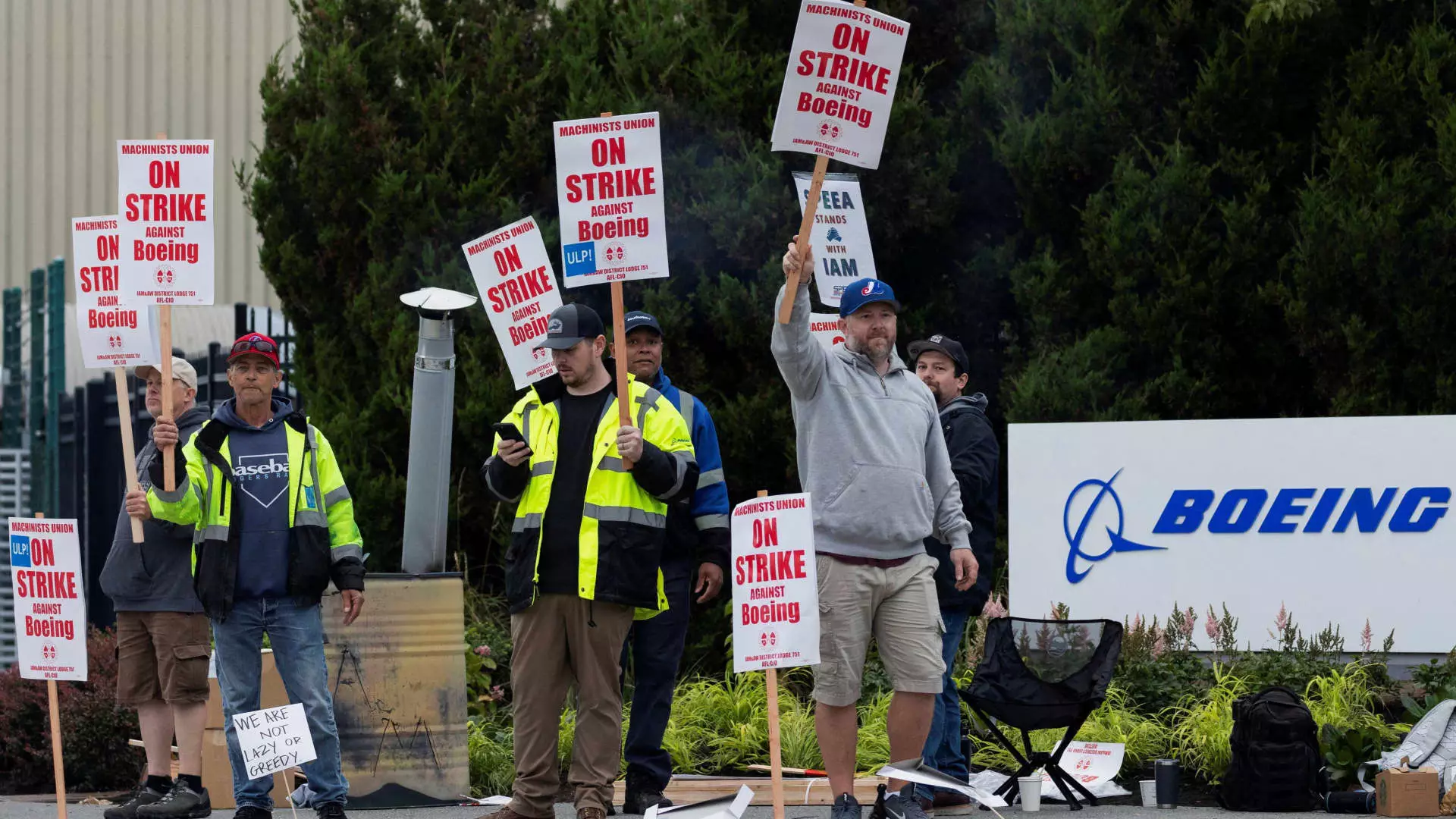In Renton, Washington, tensions are escalating as Boeing workers walk picket lines while making a stand for better earnings amid rising living costs and the company’s ongoing financial turmoil. This labor strike, initiated by over 30,000 machinists, began on September 13 and reflects a deeper underlying dissatisfaction with both corporate decisions and economic conditions. As workers voice their demands for wage increases amid fears of an extended strike, analysts have pointed out the financial repercussions this work stoppage may have on the airline manufacturing giant.
Effects of the Strike on Workers
The striking machinists find themselves in a precarious situation, with many resorting to side jobs in an attempt to bridge the financial gap caused by the halt in pay. The high cost of living in the Seattle area compounds their challenges. They recount tales of frugality—some sacrificing restaurant outings, while others have diligently saved up money in anticipation of this very moment. For instance, Jake Meyer, a Boeing mechanic, shared his commitment to find alternative work, such as food delivery, highlighting the difficult financial choices workers are facing.
With negotiations showing little progress, some workers are set to lose their health benefits as the situation escalates. Union leaders are mobilizing support by providing sustenance and transportation to striking workers, exhibiting unity in their struggle. The strike fund enables workers to secure a basic income, albeit a meager $250 weekly.
Boeing’s Financial Strain and Response
Boeing is caught in a web of financial distress that has only deepened as the strike unfolds. With debts reaching around $60 billion and a significant financial hit of about $50 million per day from the strike alone, the company’s situation looks grim. The recent operational struggles, including the loss of approximately $8 billion this year triggered by past manufacturing failures, have exacerbated the challenges faced by the new CEO, Kelly Ortberg. As Ortberg attempts to revitalize Boeing’s reputation amid this chaos, it also becomes evident that any long-standing strike could lead to a credit downgrade—compounding the company’s borrowing challenges.
Despite these pressures, Boeing’s latest offering included a 25% general wage increase, which workers found insufficient against their demands for a 40% hike along with additional benefits, including bonuses and a restoration of lost pensions. This discord shows the disparity between worker expectations and corporate offers—an imbalance that, if not addressed, could prolong the strike.
The International Association of Machinists and Aerospace Workers District 751, representing the striking workers, finds itself at a critical juncture. With nearly 96% in favor of the strike action, union leadership remains focused on negotiating meaningful advancements on behalf of their members. They express dissatisfaction with the lack of forward movement in negotiations, voicing concerns over unresolved critical issues highlighted in recent member surveys.
As the strike continues, the need for both parties to reach an agreement has become paramount not just for the workers but for the broader implications on Boeing’s supply chain and production capabilities. Layoffs or furloughs announced in response to the strike suggest a troubling prospect for the company—a diminished workforce could severely impact long-term recoverability as hiring and training skilled labor in the aerospace sector is inherently time-consuming.
Boeing now finds itself amidst a wave of labor activism that has spread across various industries, demonstrating a growing trend of workers advocating for better wages and job security. Transportation Secretary Pete Buttigieg’s comments highlight governmental support for a resolution that harmonizes the needs of workers while recognizing the broader economic pressures on companies like Boeing.
As the economy grapples with its post-pandemic phase, the struggles Boeing encounters are revealing. Unlike past strikes, such as the 2008 labor dispute which lasted two months and saw a stronger corporate backing, Boeing today is navigating a significantly different labor market characterized by fierce competition for skilled workers.
In the aerospace realm, where specialized technical skills are paramount, maintaining workforce morale and retention is critical. Bank of America’s insights indicate that securing and keeping these professionals amidst job competition will weigh heavily on Boeing’s strategic decisions moving forward.
The ongoing strike at Boeing encapsulates broader themes of economic disparity, labor rights, and corporate responsibility. As both sides grapple to find common ground amidst the backdrop of escalating financial stress, the implications of their negotiations extend far beyond the picket lines. Workers are not just advocating for mere wages; they are demanding recognition of their value in an industry that remains vital to global travel and trade. How Boeing navigates this pivotal moment will shape its future trajectory and influence labor relations across various sectors in the longer term.


Leave a Reply